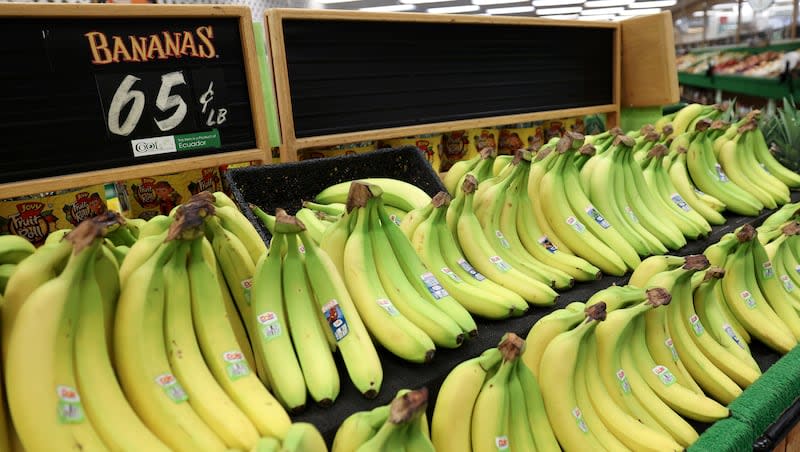Trying to eat more fruit? Here are 5 cheap, effective options

Incorporating fruit in your diet comes with a lot of benefits.
According to Medical News Today, fruit is a great source of needed vitamins, minerals, fiber and antioxidants — the latter of which can prevent diseases and even cancer.
However, not enough people get their recommended daily intake for fruit. According to a 2019 survey by the Centers for Disease Control and Prevention, only about 12% those polled met that daily measurement — and it’s even lower for those with low income, at nearly 7%.
So what are the healthiest and cheapest fruits to eat? And what is the recommended amount to eat per day?
How much fruit should I eat every day?
The daily recommendation given by the U.S. Department of Agriculture is about 2 cups a day, but it can all depend on your height, weight, age, gender and physical activity.
USA Today provides some examples of what a cup of fruit could be, including:
One small apple.
One large banana.
Twenty-two seedless grapes.
One slice of watermelon.
Here are some inexpensive fruits to incorporate into your diet.
1. Bananas
As a versatile and potassium-rich fruit, bananas are an appealing option for most diets.
Healthline listed multiple studies finding bananas — rich in nutrients — help to improve digestive health, kidney health and heart health. They can also help with weight loss and insulin sensitivity.
According to Tasting Table, bananas cost about 51 cents per pound on average.
2. Cantaloupe
A vitamin- and mineral-rich fruit, cantaloupe has several health benefits.
Cantaloupe has about 100% of your vitamin A and C daily value in only a cup serving. It also has anti-inflammatory and antioxidant properties that can help fight off high blood pressure, promote hair health and protect your eyes from age-related macular degeneration, or blurred vision, per WebMD.
Per Healthline, a cantaloupe costs about 52 cents per pound on average.
3. Kiwi
Kiwis, while small, provide a powerful punch of nutrients.
Registered dietitian Danielle Crumble Smith told USA Today that kiwis contain quality amounts of fiber and vitamins C and E. Plus, kiwis naturally contain enzymes that benefit eye health as well as aid with digestion.
According to Healthline, kiwis cost about $2.18 a pound on average.
4. Oranges
While it’s already known they contain a ton of vitamin C, oranges have more benefits than just one vitamin.
Per Medical News Today, oranges can maintain skin health and have enough fiber and potassium to support heart health. They also contain folate — a B vitamin that’s crucial for pregnancy and can help to prevent strokes and Alzheimer’s disease, Crumble Smith told USA Today.
According to Tasting Table, one orange can cost less than $1 on average.
5. Wild blueberries
Ranked with the highest antioxidant content among fruits and vegetables, wild blueberries have great health benefits.
Wild blueberries are high in fiber, manganese, and vitamins C and K. In addition, their high amount of antioxidants help benefit cardiovascular and cognitive abilities while preventing cell damage from cancer-causing compounds, Crumble Smith told USA Today.
Per Healthline, a pound of mixed berries, purchased from a frozen bag, costs about $3.64.

